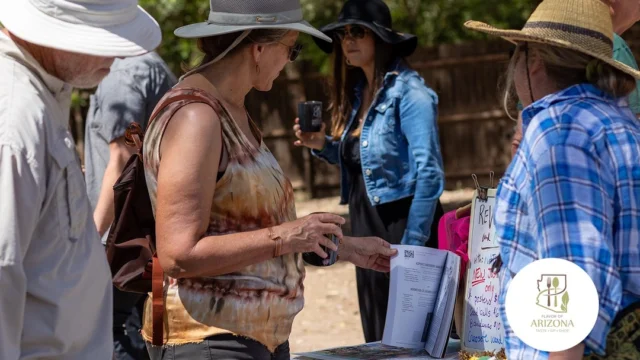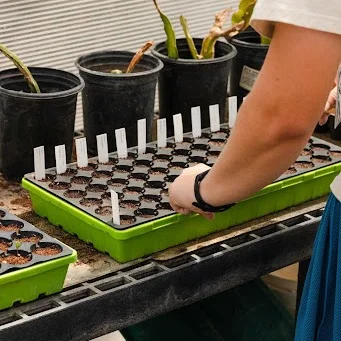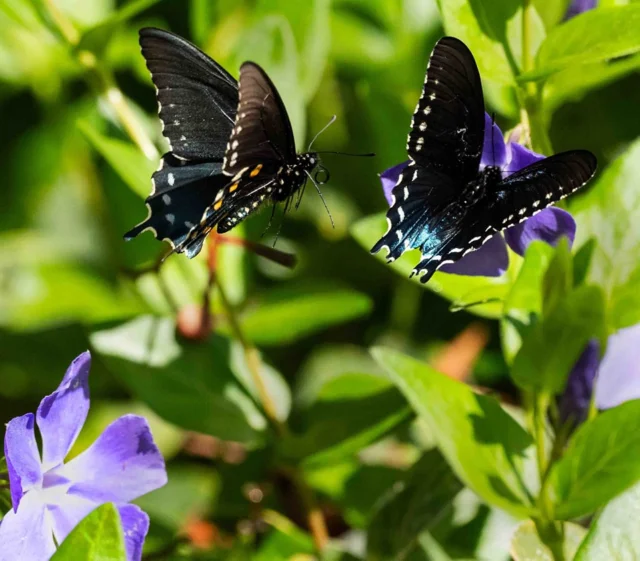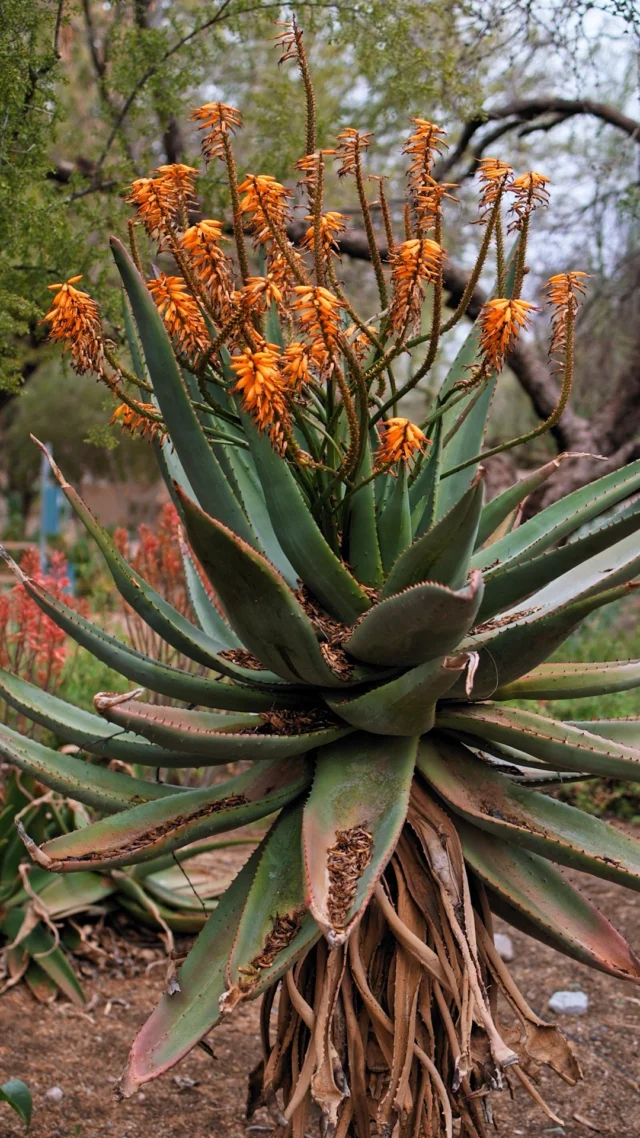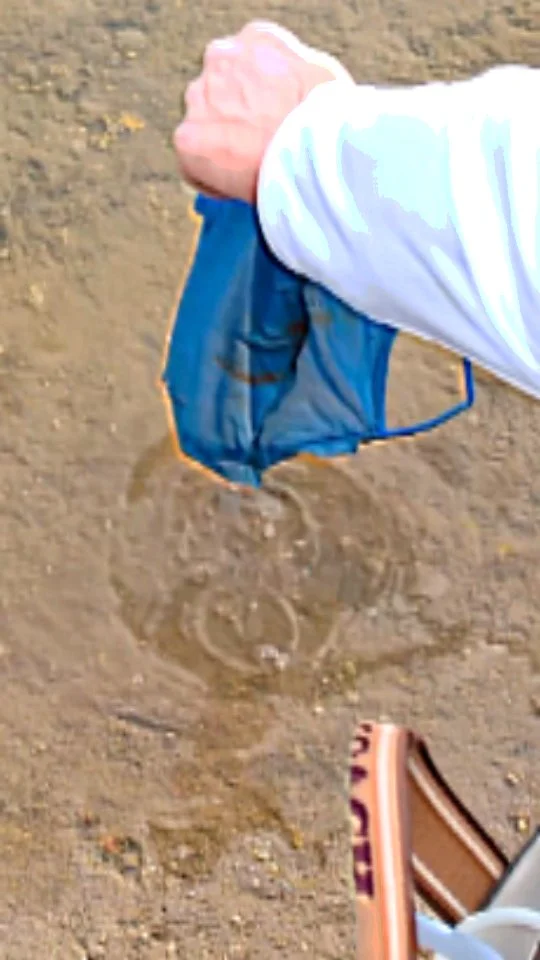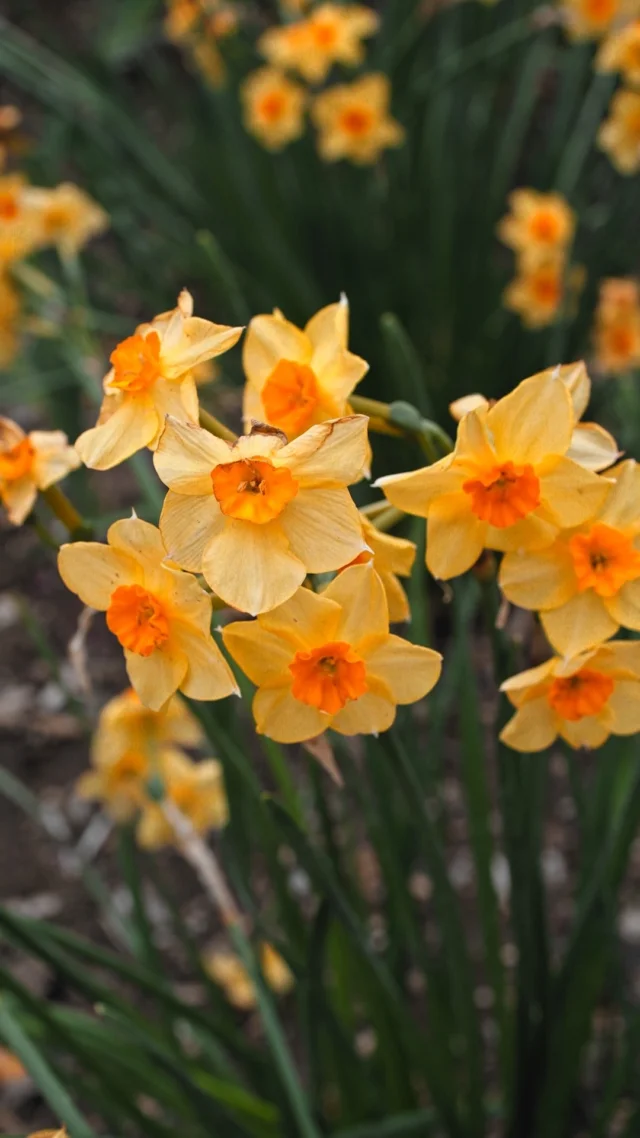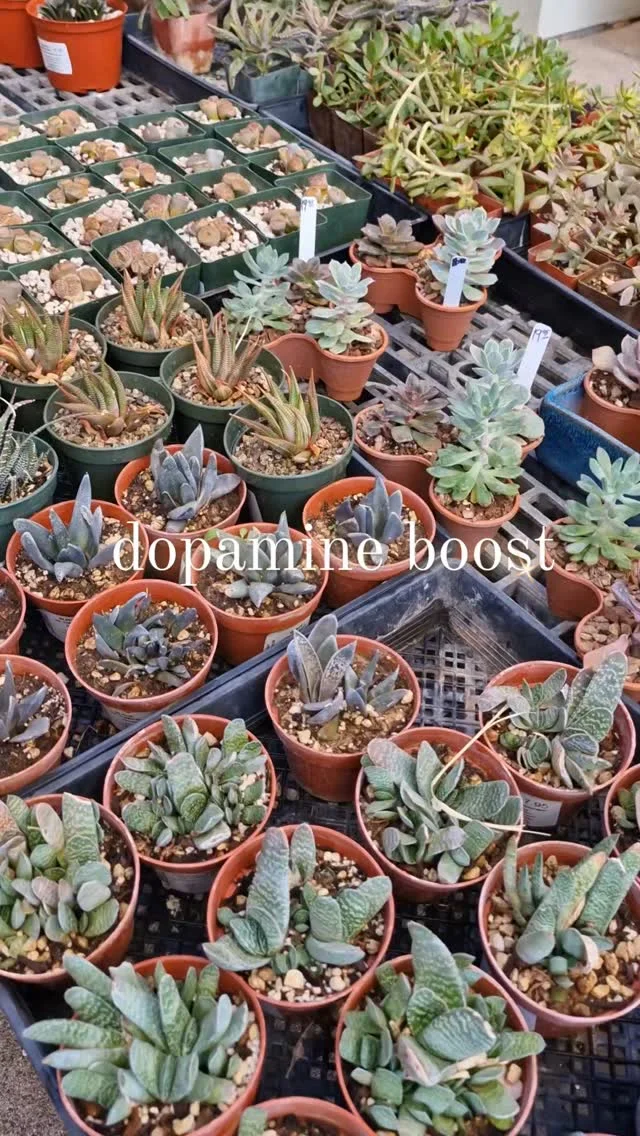With missions devoted to conservation, botanical gardens and arboreta play an important role in saving the world’s plant species and making them known to the public. Of BTA’s 3,897 plant species, 9.8% are of conservation concern, meaning that they are endangered or threatened with extinction.
Why is this important? Healthy ecosystems depend on plant and animal species as their foundations. When a species becomes endangered, it is a sign that the ecosystem is slowly falling apart. Each species that is lost triggers the loss of other species within its ecosystem. Humans depend on healthy ecosystems for our clean air, water, and food.
Several plant collections at BTA hold high numbers of threatened species. These include members in the following families: Cactaceae (cacti), Aloe, Agave, Cycad, Eucalyptus, Euphorbia, and Fouquieria (ocotillo).
BTA staff utilized reports from the International Union for Conservation of Nature (IUCN), the US Endangered Species Program and the Convention on International Trade in Endangered Species (CITES), among others.
Plant species are at risk from habitat loss due to urban and agricultural development, over-collection, and of course, climate change.
Rare & Endangered at BTA
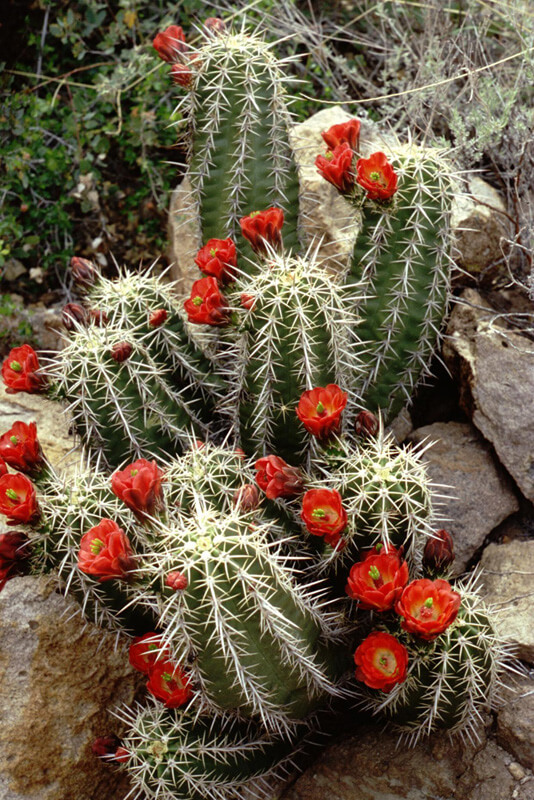
Arizona Hedgehog Cactus
(Echinocereus triglochidiatus var. arizonicu)Only around 250 to 1,000 individuals of this once widespread cactus now exist at a few scattered locations in southcentral Arizona. These locally endangered plants prefer rough terrain in oak woodland and chaparral, often growing in boulder crevices. Most of the year, they blend into the live oaks and manzanitas they associate with, however, they become conspicuous from late April to mid-May when they produce large, brilliant red flowers. Unfortunately, these “claret cup” flowers also serve as targets for poachers – illegal collecting, along with copper pit mining, roads, and livestock are the main threats to this species.

Bishop’s Cap Cactus
(Astrophytum ornatum)This cactus, the largest and tallest of the Astrophytum genus, can grow to six feet tall in the wild. Plants develop varying levels of woolly scales along their bodies to provide protection from the sun and produce large, showy, canary yellow flowers in the summer when they are around seven to twelve years old. This species is native to wild canyons and limestone cliffs throughout the central plateau of Mexico. While it can be locally abundant, its distribution is patchy and populations are especially prone to trampling by livestock, mining and land alteration, and illegal collection. It is currently listed as vulnerable on the IUCN Red List.
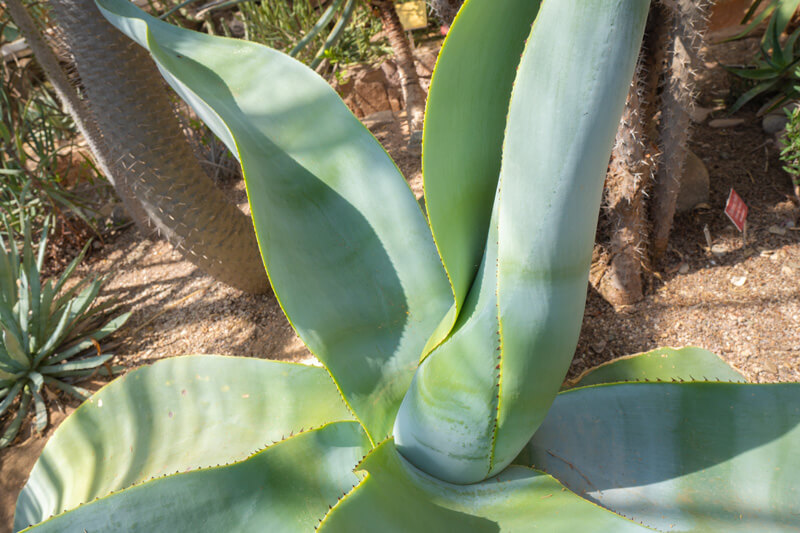
Dolphin Agave
(Agave guiengola)This large agave is unique for both its pale, silvery coloration and the habit of its wide leaves to orient almost parallel to the ground, giving it a sculptural quality that has made it popular in the horticultural trade. It forms open rosettes up to five feet tall by six feet wide. Wild plants grow on sheer rock faces in the mountains of Oaxaca, Mexico. While seemingly abundant, whole populations are easily destroyed when marble is extracted from the rocks on which they grow. This ongoing threat, along with poaching, led to the species being listed as endangered by the IUCN.

Desert Ironwood
(Olneya tesota)Though seemingly plentiful, this Sonoran Desert tree faces a number of growing threats. It is widely exploited for its valuable wood, which is used for carving and fuel in Mexico. In addition, trees are often cleared to make way for agriculture and urban development across much of its range in the southwestern US. The invasion of buffelgrass also alters the native plant community and increases the chance of fire. All of these threats combined with the fact that this species is slow to regenerate and limited in its ability to respond to environmental change put this tree in jeopardy. It is considered to be an indicator species of the ecological health of the Sonoran Desert.

Greenway Euphorbia
(Euphorbia greenwayi subsp. greenwayi)This rare East African succulent is characterized by its sprawling, square stems, marbled with dark patterns. It also features colorful spines and distinctive trumpet-shaped flowers. Unfortunately, it now only occurs in the wild in a single location within the Iringa Escarpment of Tanzania – an area totaling less than two square miles. Its woodland habitat continues to be destroyed by firewood harvesting and charcoal production near the town of Iringa. Because of these growing threats and its small range, this species is listed as critically endangered by the IUCN.
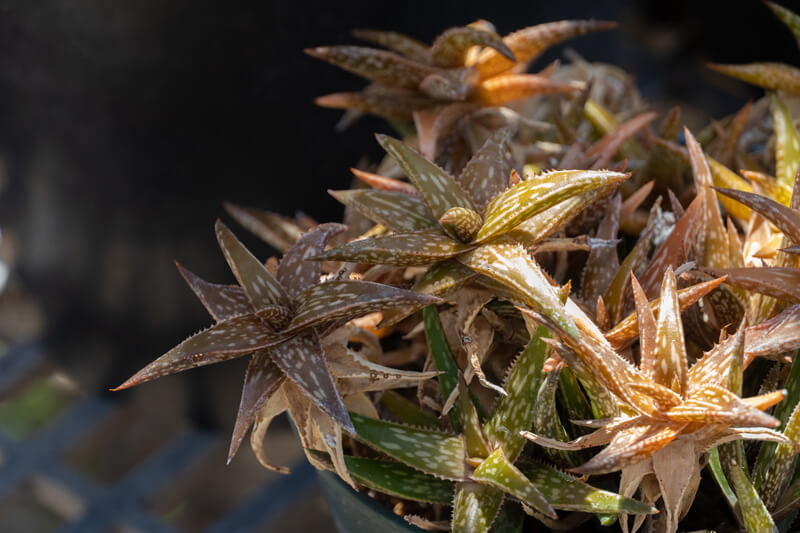
Gaan Libah Aloe
(Aloe jucunda)This petite, clumping aloe is known for its attractive dark green leaves, bright speckles, and coral pink flowers. In the wild, its populations are limited to three locations in northern Somalia, which combine to a total range of about nineteen square miles. The dry forests of the Gaan Libah plateau on which it grows are heavily impacted by livestock grazing, logging, and charcoal burning. Due to this continued habitat destruction, it is listed as critically endangered by the IUCN.

Golden Barrel Cactus
(Echinocactus grusonii)Currently, there are only around 11,000 representatives of this beautiful, golden-spined cactus living in the wild on the species’ preferred rocky, volcanic slopes. This may seem shocking, since this is one of the most common cactus species in cultivation, even being grown at gardens in the United Kingdom, far from its native east-central Mexico. A large section of the wild population was demolished with the construction of the Zimapán dam and reservoir in the 1990’s, and today illegal collecting continues to diminish its numbers. For these reasons, this iconic species is listed as endangered by the IUCN.

Lemon Ball Cactus
(Parodia leninghausii)This gentle beauty is native to rock outcrops in the hilly grasslands of the Rio Grande do Sul province in southern Brazil. It grows in rock crevices, sometimes on nearly vertical surfaces. Plants are covered in soft, long golden spines and, in summer, mature individuals produce a “bouquet” of yellow flowers at the apex of each stem, each flower measuring a stunning two inches in diameter. The main threats to this species in the wild are dam construction and rappelling sports within its range, as it is easily dislodged from rock walls. It is listed as endangered by the IUCN.

Salt River Gum
(Eucalyptus sargentii)In its native western Australia, this small tree thrives in highly saline conditions along salt lakes and natural drainages. It is valued as an ornamental for its attractive contrasting bark – rough and black below and smooth and coppery above – as well as for its ability to thrive in soils with salt levels lethal to most plants. Unfortunately, large sections of its native woodland habitat have been cleared to create pastures and agricultural areas. It is listed as endangered by the IUCN.
#1Arb
Tag us on Instagram with
@btarboretum #1Arb

